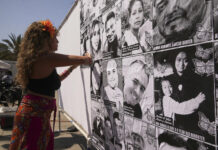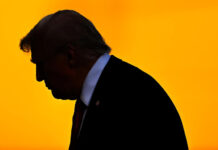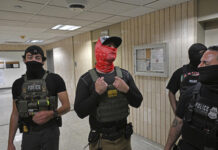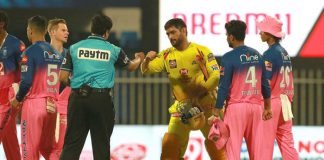SEPTEMBER 7, 2020
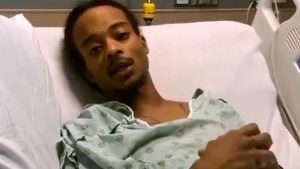
In that list, though, Mr. Blake, a Black man who was repeatedly shot in the back by a white police officer in Kenosha, Wis., is also set apart. Unlike so many of the people who have become grim symbols for a movement, Mr. Blake survived and has begun to tell his own story.
“Your life — and not only just your life, your legs, something that you need to move around and move forward in life — could be taken from you like this, man,” Mr. Blake says from his hospital bed, snapping his fingers for emphasis, in a video released over the weekend. In the video, he speaks publicly for the first time about what happened to him. His injuries are severe, and his family says he was paralyzed from the waist down in the shooting last month.
In the video, which was recorded by an activist from New York who distributed it on social media, Mr. Blake describes his injuries, which he says left him with staples in his back and stomach.
“Every 24 hours, it’s pain — it’s nothing but pain,” Mr. Blake says. “It hurts to breathe; it hurts to sleep. It hurts to move from side to side. It hurts to eat.”
Shermaine Laster, the activist, said he had showed up unannounced at the Milwaukee hospital where Mr. Blake is being treated and was meeting Mr. Blake for the first time.
For demonstrators seeking broad changes to American policing, the prospect of Mr. Blake’s presenting the public with a personal voice to his experience was encouraging.
“My son is gone,” said Monique West, whose 18-year-old son, Ty’Rese West, was shot and killed in 2019 by a police officer in Racine County, not far from Kenosha. “He’s not here to tell nothing. There’s only two stories — either the officer or the person that’s gone.”
A Kenosha officer, Rusten Sheskey, fired seven times on Aug. 30 at Mr. Blake, who was trying to get into a car. The shooting was captured by a neighbor on a disturbing video that quickly drew outrage on social media. It set off sometimes destructive demonstrations in Kenosha and quickly became a topic in the presidential race, drawing visits from President Trump and Joseph R. Biden Jr.
Cortez Rice, a nephew of George Floyd, the man who was killed by the police in Minneapolis in May, said Mr. Blake’s own words about what had happened to him would hold a unique value. “Jacob’s got the chance — he’s going to get to speak,” Mr. Rice said.
Gregory Bennett Jr. organized a community event on Sunday in Kenosha at which state lawmakers heard demands from residents for change. A seat was left empty for Mr. Blake at the event — a reminder, organizers said, that he might yet be a voice for needed reform. Without such survivors, Mr. Bennett said, the stories are often muted.
“It would have been swept under the rug,” Mr. Bennett said. “There’s people whose family members have been shot and killed here in this city, and guess what? You never see a news camera or nothing.”
To be sure, others who became symbols of abuse at the hands of the police have survived to tell their stories. Rodney King, who was beaten by Los Angeles police officers in 1991, and Abner Louima, who was tortured by New York police officers in 1997, both lived to describe what had been done to them. Mr. King, who died in 2012, and Mr. Louima, who started a real estate business in Florida, largely tried to move on.
Of people shot at by officers from the nation’s 50 largest police departments between 2010 and 2016, about two-thirds survived, according to data obtained by Vice News.
“There’s an invisibility to it,” Frank Edwards, an assistant professor of criminal justice at Rutgers, said of people who survive police shootings, adding that many of those survivors are charged with crimes and rarely draw public attention or speak publicly about their cases. “They fear retribution if they do speak,” he said.
What role Mr. Blake will choose to play in demonstrations remains to be seen. He still faces significant medical challenges, and one of his lawyers has said that his walking again would be a “miracle.” Mr. Blake also is contending with legal charges.
By videoconference from his hospital bed, Mr. Blake pleaded not guilty on Friday to three domestic charges against him, including a sexual assault count. The charges were filed in July. On the day Mr. Blake was shot, the woman who reported the assault called 911, saying that Mr. Blake was at her home. The Kenosha police said they were trying to arrest Mr. Blake when the shooting occurred.
The trial in that case has been scheduled for November, although it could be delayed.
Ben Crump, a civil rights lawyer who is representing Mr. Blake and has represented families of many Black people killed by the police, said Mr. Blake was still coming to terms with the public attention to what had happened to him and what that might mean in the months ahead.
“He hasn’t been able to fully grasp what a symbol he has become,” Mr. Crump said, adding that Mr. Blake was mostly focused on making sure that his young children — three of whom witnessed the shooting — are not traumatized and that they understand that he will emerge from this.
“The way he’s trying to be a strong Black father for his children is the way that he’s taking on the mission of this movement,” Mr. Crump said.
Porche Bennett, an organizer with Black Lives Activists Kenosha, or BLAK, said on Sunday that there would be no pressure on Mr. Blake to publicly take up their cause or to become an outspoken advocate for the movement.
“We know we’ve got his support,” she said.
Courtesy/Source: NY Times

